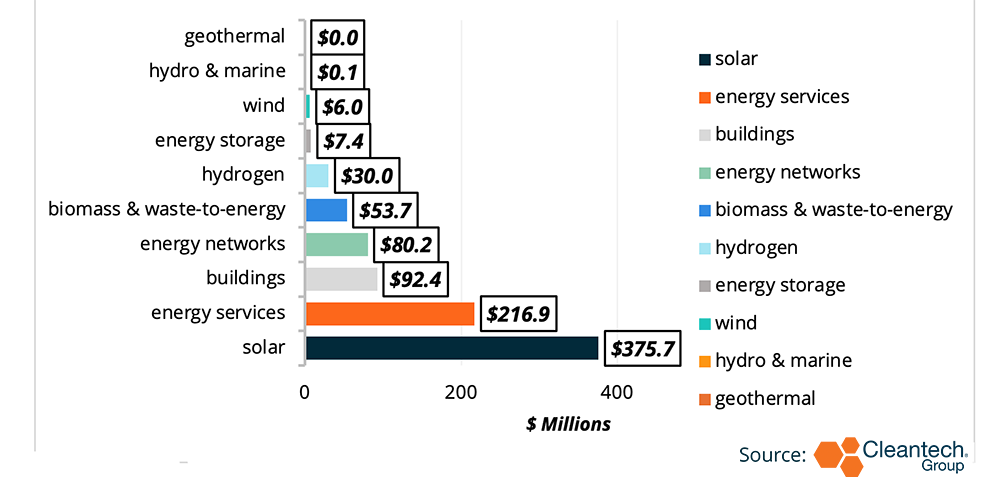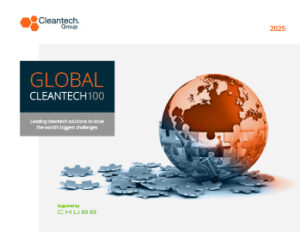Ecosystem Spotlight: South Africa’s JETP, International Partnerships, and Prepping for Large-Scale Innovation
South Africa’s Just Energy Transition Partnership (JETP) enters a new phase, with the U.S. withdrawing its support earlier this year. Reaffirmed by existing members through additional funding, the pioneering partnership continues to impact the country’s progress in its energy transition and, by extension, cleantech development. International partnerships like the JETP can be vital accelerators for local cleantech ecosystems in several ways:
- Influencing institutional reform to prime existing infrastructure
- Leveraging bilateral relationships to mobilize the private sector
- Building capacity for widespread deployment
- Laying systematic foundation for technological innovation
Let’s Take It from the Top: Prompting Infrastructural Reform Through Institutional Support
Multi-national public sector partnerships like the JETP announce high-level financial support from international partners ($8.5B originally, with an additional $5B including the global gateway package announced in 2025), enabling necessary policy shifts to prime the energy industry for widespread adoption and technology scaling:
- The Just Energy Transition Investment Plan (JET IP) maps clean energy investment needs over five years
- Lifting licensing exemptions for embedded generation facilitates private investment in solar/wind
- Dedicated JETP Project Management Unit and Presidential Climate Commission to engage ecosystem actors to create inclusive energy transition plans
- Passed Climate Change Bill in 2023 to facilitate institutional arrangements for climate policies and actions, as well as to mandate the implementation of a carbon budgeting system and the establishment of sector emissions targets
- Published the Green Finance Taxonomy and JSE’s Sustainable Disclosure Guidance, prompting local financial institutions to publish climate-related policies and commitments
Multilateral development banks finance and explore local grid and energy storage reform in a more inviting environment, priming existing infrastructure for renewables integration and creating space for innovative grid technologies:
- Concessional loans from the World Bank, AfDB and the New Development Bank funded Eskom’s Battery Energy Storage System (BESS), to install 1,440 MWh of grid-connected battery storage to improve reliability and absorb solar/wind fluctuations
- A 2023 grant from the U.S. Trade and Development Agency enabled exploration of AI-enhanced grid management, energy storage integration, and cross-border electricity trading. The study was implemented by U.S. firm POWER to reduce load shedding and increase the grid’s renewables capacity
- Engagement with the Chinese government, leveraging PowerChina’s expertise to upgrade high-voltage transmission and ‘smart distribution’ infrastructure bolsters local capacity for future renewable additions through modernizing Eskom’s existing infrastructure
Total Energy & Power Investments In South Africa 2020-2025 By Sector

It Takes Two to Tango: Targeted Partnerships Invigorate Innovation
In signalling global investor confidence, the JETP has attracted international and bilateral private sector collaboration targeted at scaling renewables generation, invigorating innovative development in renewables applications in mobility and battery production.
- Envusa Energy is a joint venture between Anglo American and EDF Renewables to decarbonize Anglo American’s mining operations and add renewables generation to the national grid. Envusa is developing 600 MW of renewable capacity in its first phase, planning to scale up to 3 GW by 2030
- Global independent power producers (IPPs) Enel Green Power (Italy), Scatec ASA (Norway), and Mainstream Renewable Power (Ireland) have secured over 7.7 GW in utility-scale wind and solar capacity through competitive auctions
- Anglo American and ENGIE’s have collaborated on the world’s largest hydrogen-powered mining truck in 2022 and BMW South Africa and Vulcan Energy have invested in solar-powered EV charging networks and critical mineral supply chains from local renewables scaling
Foreign partners have invested in initiatives to grow local early-stage development capabilities:
- Local mining councils partnered with the German Federal Ministry for Economic Cooperation and Development (BMZ) in 2021 to foster research and development for advanced materials and sustainable mineral processing
- The Hydrogen Valley Initiative, led by South Africa’s Department of Science and Innovation and partners like Anglo American, mapped potential hydrogen corridors and kicked off pilot projects ranging from forklifts to fuel cell bus routes
- Universities such as the University of the Western Cape are partnering with global labs on battery storage developments that take local conditions into account
Invigorating investment in green hydrogen production/technology development, coordinated international efforts aim to capitalize on South Africa’s natural geographic suitability and influence future policy support:
- $1B SA-H2 Fund launched alongside the Netherlands and Denmark (2023) to scale domestic green hydrogen production and position the country as a global export hub through mobilizing large-scale investments
- German and South African bilateral Hydrogen Task Force, invested €23.1M in hydrogen “reference projects” including hydrogen-fuelled trucks, green ammonia, and sustainable aviation fuel. Coordinated by KfW and South Africa’s IDC, financing aims to bridge funding gaps to attract private investors and value-chain development
- Sasol’s various partnerships: Signed an MoU with ITOCHU to explore a green ammonia project in Northern Cape Town and partnered with ArcelorMittal South Africa to develop a hydrogen-powered “green steel” facility at Saldanha Bay
Picking Up Pace: Considerations As Plans Come to Fruition
Even with renewed financing, the JETP still contends with practical implementation hurdles. Accelerated planning has expanding the country’s pipeline of projects, inflating the partnership’s scale further than anticipated (no doubt contributing to the U.S.’s exit, among other factors). Financing continues to encounter distribution roadblocks with local companies (e.g., Eskom’s loan delays due to its debt). Green hydrogen’s absence from 2023’s IRP and local groups’ frustrations with the governments’ lack of transparency in developing related strategy complicates foreign interest in green hydrogen.
Local frustrations also extend into the private sector, as corporates struggle to connect with local innovators. Granted, we’ve seen recent initiatives that target local talent like certification and exchange programs facilitated by Germany’s GIZ and SARETEC for wind/solar engineers and a renewables training center/incubator for prospective innovators accompanying The World Bank’s initiative to convert former coal plant Komati Power Station into a solar PV/battery facility. Ultimately, time will tell if this groundwork laid by the JETP is enough to bridge the divide and inch innovators across the path to commercialization.
Overall, the JEPT has been crucial in injecting momentum into the local cleantech development through forging new partnerships and anchoring national strategy through long-term strategic alignment. To capitalize on this momentum, ecosystem actors should leverage the bolstered support provided through international partners to accelerate development at a local level.



